Good Day everyone! Wow- I was just reading through the comments from last week’s Love City 101 Revisited post and there was SO much thoughtful insight from so many of you that I decided to jump into the next few parts of this series right now! I do so appreciated all of your positive commentary and, although I am admittedly not great at replying to all of it, I DO read all of it and take it to heart. So, with that being said, let’s jump into one of our favorite things about St. John, the furry friends on land and all creatures of the sea…And best practices on how to allow them to thrive in the busy-with-people environment here on island.
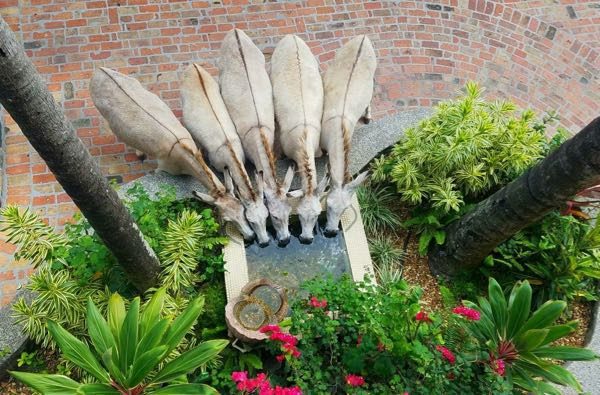
Real quickly, I want to touch on one of the comments made on last week’s recap. Someone read the “beach etiquette” post for the first time and thought that it was real-time. An honest mistake really. However, at the time the post was written, masking was still applicable, and I want to assure you all that masking and COVID testing are currently a thing of the past here in the USVI. And, while there is a lot of timeless information in that particular write-up, the masking is NOT a current event 😉
So, when you click through on a link, here or anywhere really, check the date on the click-through article you are reading to see if ALL of the information is timely.
Ok, let’s jump right in and begin with everyone’s favorite St. John icon…The Donkeys!
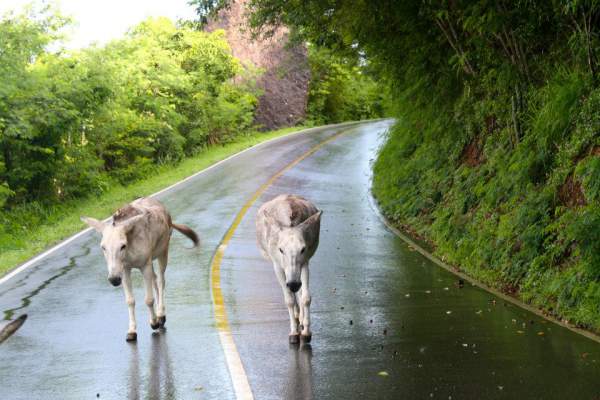
As personable and friendly as these beloved creatures are, they are still animals in the wild and should be treated as such. I’m also going to include beautiful and not-so-skittish deer of St. John in this portion of the article as they have become friendlier and friendlier over time. Do you know why these wild animals are so friendly with the two-legged dwellers of this island? Because some of us feed them. From the cars, on the trails, on the beaches…They see us as our pups and kittens see us. As a food receptacle 😉
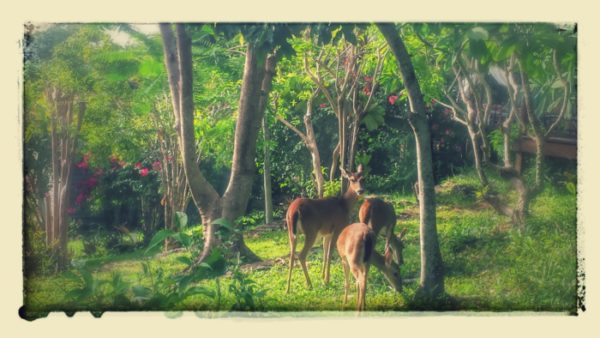
I know, I know…our domesticated animals at home love us to pieces and rely on us for much more than a food source. Chewy is my best friend and confidant after all 🙂

But you know what would happen if we stopped feeding these ancestors of once wild animals that now have multiple treats a day and cushiony surfaces to lounge on in our homes? They will likely (instinctually) leave us to find another food source in order to survive (cats most specifically).
Ok, so coming back to the deer and donkeys…What happens if throughout the peak tourism season, they are given treats and vittles from the hands of humans and then, during the slower time of year (when the island’s population is primarily residents who do NOT feed the wildlife) those treats stop abruptly? Yes, to my point, they will find another food source and go back to their own survival instincts eventually, but at what cost? How long might they go hungry looking to people for the food they have become accustomed to before reverting to their natural (and more healthy!) food sources?
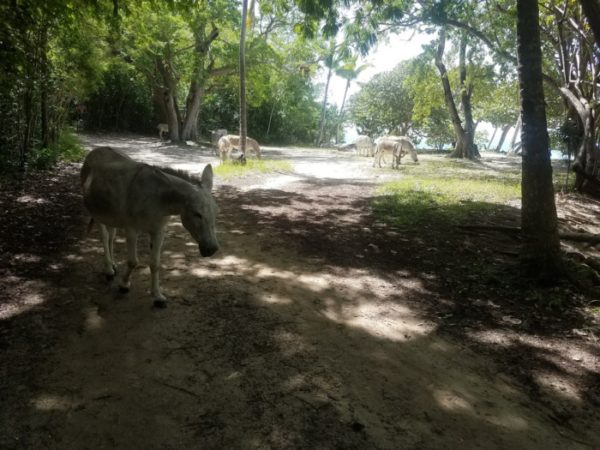
Additionally, human food can be wildly unhealthy for wild animals in any form or amount. That bag of potato chips or doritos in your hand? Well, it isn’t healthy for us (despite its deliciousness!) and it certainly isn’t healthy for the wildlife! Keep your food to yourself and enjoy it while enjoying the company of these gentle creatures from a distance.
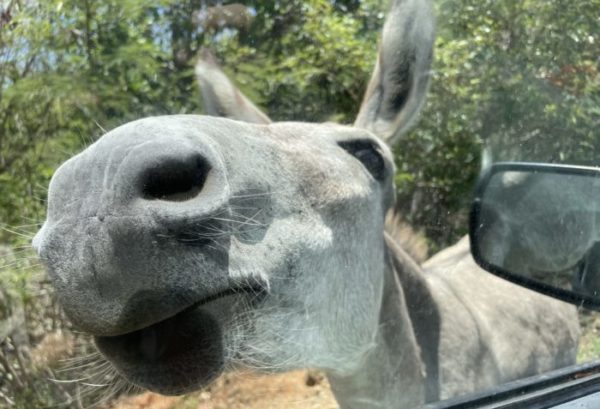
One thing you CAN DO to help the donkeys (and deer and other land-dwelling creatures) of St. John is to provide them with water! During drier months it is difficult for them to find fresh water…And assisting with that is totally acceptable. If you have property here, you can place a five-gallon bucket with fresh water in it somewhere outdoors and provide a lil oasis for critters of all shapes and sizes. Make sure to put a stick in the bucket so that smaller critters don’t get stuck and drown. And change the water frequently to ensure it is fresh and clean for our furry and feathered friends.
Oh, one more thing about our furry friends on land…PLEASE drive with caution on our roadways. You never know when you are going to come around a sharp curve to a solitary cow, a flock of sheep or goats, a family of piglets, a drove of donkeys or a fleeting deer. Take it slow and easy (on island-time, if you will) and be aware of your surroundings…And, keep left! 🙂
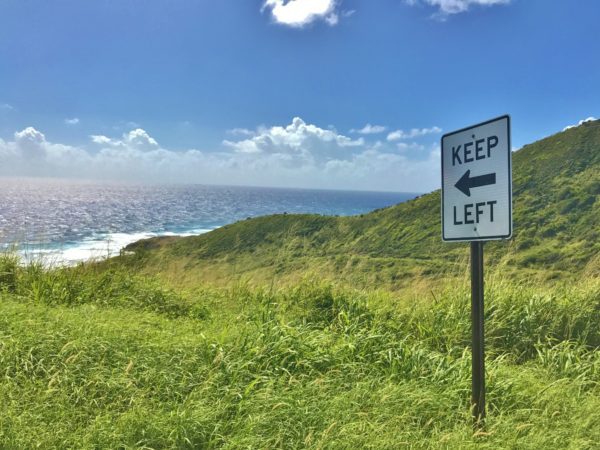
Alright, the more (in my opinion) important issue at hand: Protecting and preserving the coral and other under-the-sea life.
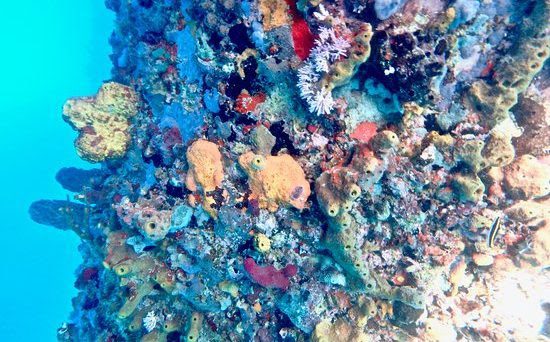
Coral reefs are the most diverse eco-system in the world and even seemingly dead coral can be host to millions of tiny organisms that make up the bottom feeders of the marine food chain. I will never forget swimming through the shallows around Waterlemon Cay over the seemingly bleached and dead coral. I looked down and maybe two and a half feet below me was a moray eel. Looking up at me from under a brittle coral skeleton. Well, that was a bit too close for comfort, so I swam pretty quickly outta there.
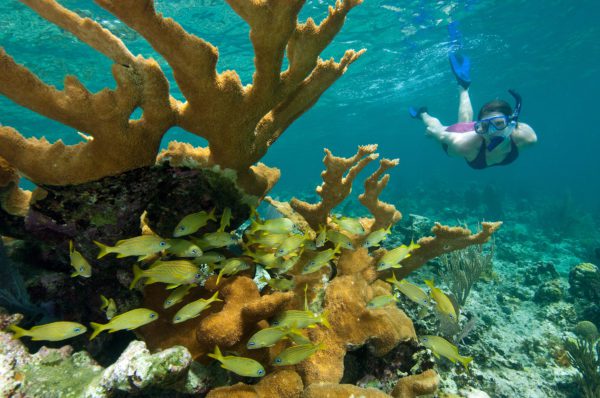
But, to my point, you never know what is living underneath a stone unturned beneath the sea. So, lesson number one is do not touch or stand on any type of coral, sea grass, stones or anything other than a sandy area when exploring the shorelines in any marine environment! You also never know when an urchin might be tucked away under that seemingly harmless rock you want to stand on in order to take a little break from swimming to adjust your mask or your fins or your hair…Those lil buddies DO NOT feel good on the skin 😉
The coral reefs surrounding our islands are even more important to the marine ecosystem than the turtles, the sting rays the parrot fish and the sharks. Why? Because coral reefs are the habitat and food source for all of these creatures of the deep. Even if they don’t feed on the coral or the creatures living in the reefs directly, coral is the grand central station of the sea. They are, in essence, the primary source of life in the sea. And our coral reefs are in danger.
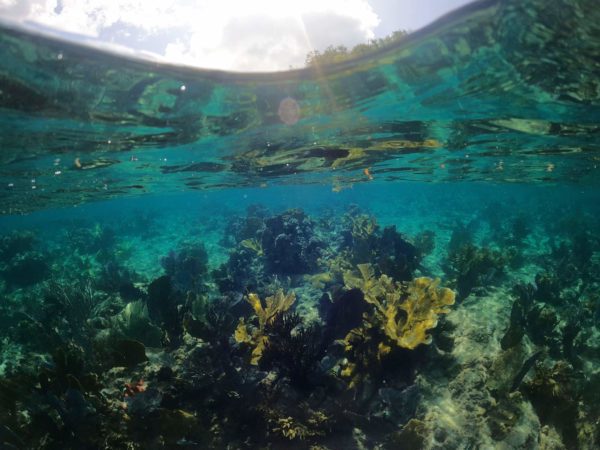
Now, there is nothing we can do to turn back the clock and reverse global warming (whether or not you believe in it, the depleting coral reefs tell a tale of human impact). But we can use sunscreen that is safe for our skin AND for our reefs to lessen your personal impact! Any sunscreen containing ANYTHING other than zinc or titanium dioxide as the active ingredient is not, in fact, Reef Safe.
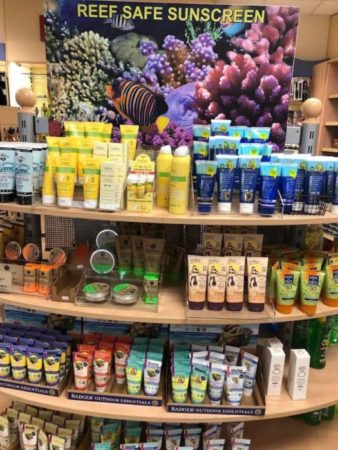
Fun factoid: “REEF SAFE” and “REEF FRIENDLY” are not regulated by the Food and Drug Administration when it comes to printing them on a bottle of sunscreen! So, seeing that little label on the front of a sunscreen bottle is not your final step in selecting a suncreen that will properly protect you and our coral reefs and sea life. It is SO unbelievably frustrating to see responsible consumers getting duped. I cannot tell you how many times I have had a kind and understanding conversation with one of our guests on Asante about their misled sunscreen selection. They were trying to do the right thing. And marketing efforts by the sunscreen companies make it frustrating and difficult for folks who care to do just that.
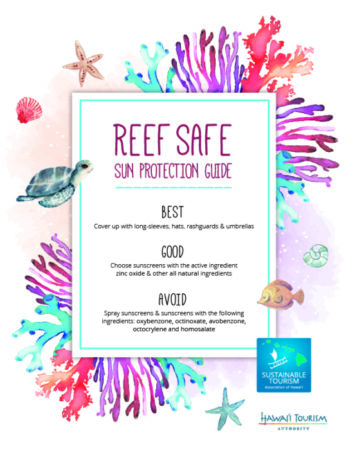
So, you have to check the active ingredients to make sure they are only Zinc or Titanium Dioxide. And past that, make sure your sunscreen selection doesn’t contain any of the Toxic Three O’s which are, in fact, illegal in the USVI:
-
Oxybenzone
-
Octinoxate
-
Octocrylene
A few of my favorites are Australian Gold Botanical Blends, Bare Republic and Sun Bum (The brown bottle is NOT reef safe but the white bottles are, and they smell just as delicious!). Take a peek at the Island Green Living Reef Safe Sunscreen list to see if your preferred brand made the cut and to stock up for your next trip!
As important as the coral is the marine environment world-wide, there are some other things that we should all be mindful of when sharing the underwater habitat with the creatures who call it home. For starters, look but do not, never, ever, ever, touch. One phrase that I LOVE and keep in my mind when exploring the underwater world is “Leave only bubbles.” It makes me giggle and keeps me aware of my distance from the reef while snorkeling. Thanks for that Friends of Virgin Islands National Park!
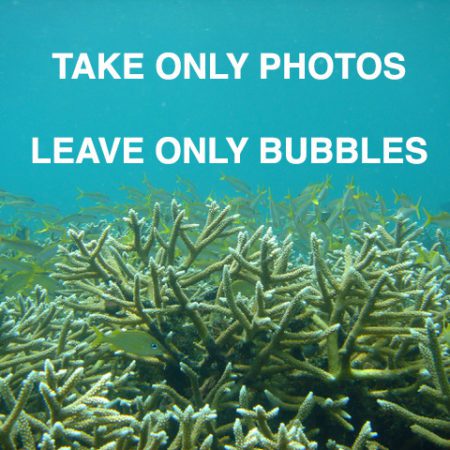
We shouldn’t touch the turtles. We shouldn’t pick up the starfish. And we should never stand on the reefs or seagrass. It’s easy to simply be an observer in the sea. Just float, look and listen to the beautiful Parrotfish snacking away on the coral reef that they call home.

Oh, and one last bit of information. If you see an animal in distress while visiting St. John, please refer to the following list of contacts in order to help them. The following information is provided by another fantastic local organization: St. John Wildlife Rehabilitation.
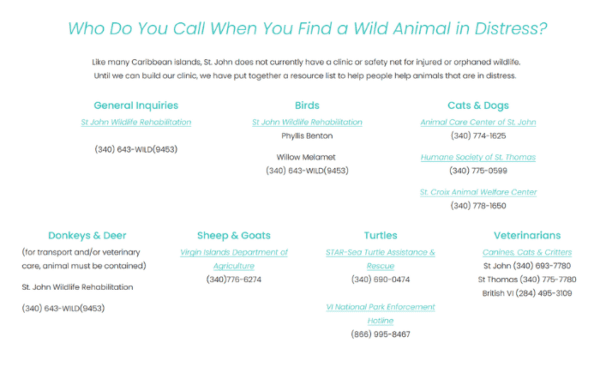


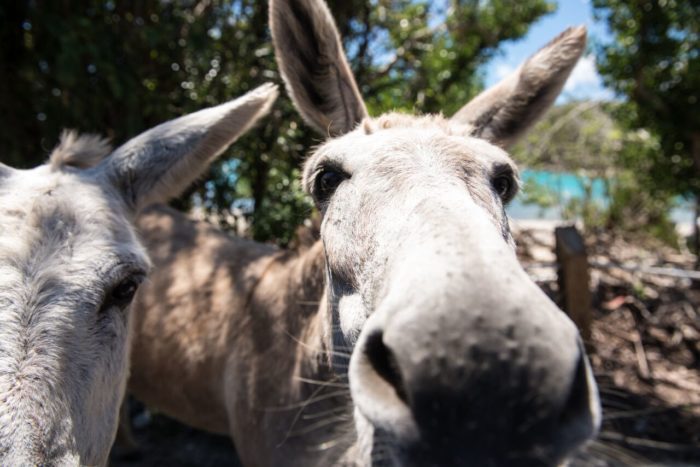
Hi Hillary, great job on the ” reminders ” list ! That got me to thinking about something else. As a many time visitor, I know many of the fish species, but was wondering if there is a fish identification book that is available for the specific area of the Virgin Islands ? Most books I have seen are kind of non-specific as to the areas of the Carribean that they would be applicable to . We will be down again in early March ! Can’t wait !
Friends of the VI Nation Park’s shop has some options both in store and online:
https://donate.friendsvinp.org/shop
Also while I was at Skinny Legs last week, I noticed the shop in front (can’t recall their name) had some laminated cards as well.
There is a website I often reference, https://www.snorkelstj.com. The photos are from St. John and were taken by a former resident. Many reference books only have one photo of one fish or creature, but Barb often has many images of the same fish, as they can look very different at different stages, in a different light, etc especially creatures that can camouflage themselves.
An excellent article Hillary!! We totally agree and have for many years followed these procedures. And now with with the quality sunscreen that I need to be covered , I am able to enjoy being in the sun for at least a short time! I also cover with fabric clothing that is an sp50, also available in the past few tears…shirts, pants and head coverings.
Back in the 50s, 60s, and even in the early 70s before asphalt hit St John, I used to see a lot of peacocks on the island. Even in 2000 I would hear them in the hills. The last several times to the island, there was no evidence of them. Are they all gone?
Thank you for helping people take best possible care of our island animals. I’ve copied into my phone your list of phone numbers to call for an animal in distress. In the phone, it will be handy when I need it and can be enlarged to be legible.
Hello and thanks for the helpful info! Question about your favorite sunscreens: do they leave you skin paste white? I’m having trouble finding a reef safe brand that doesn’t leave me streaked in white paste. Thanks!
Question about the stjohnopoly game. Is it available somewhere on the island? Thanks
Love the articles and photography! Will be there in February with my Grands!!
Good luck.